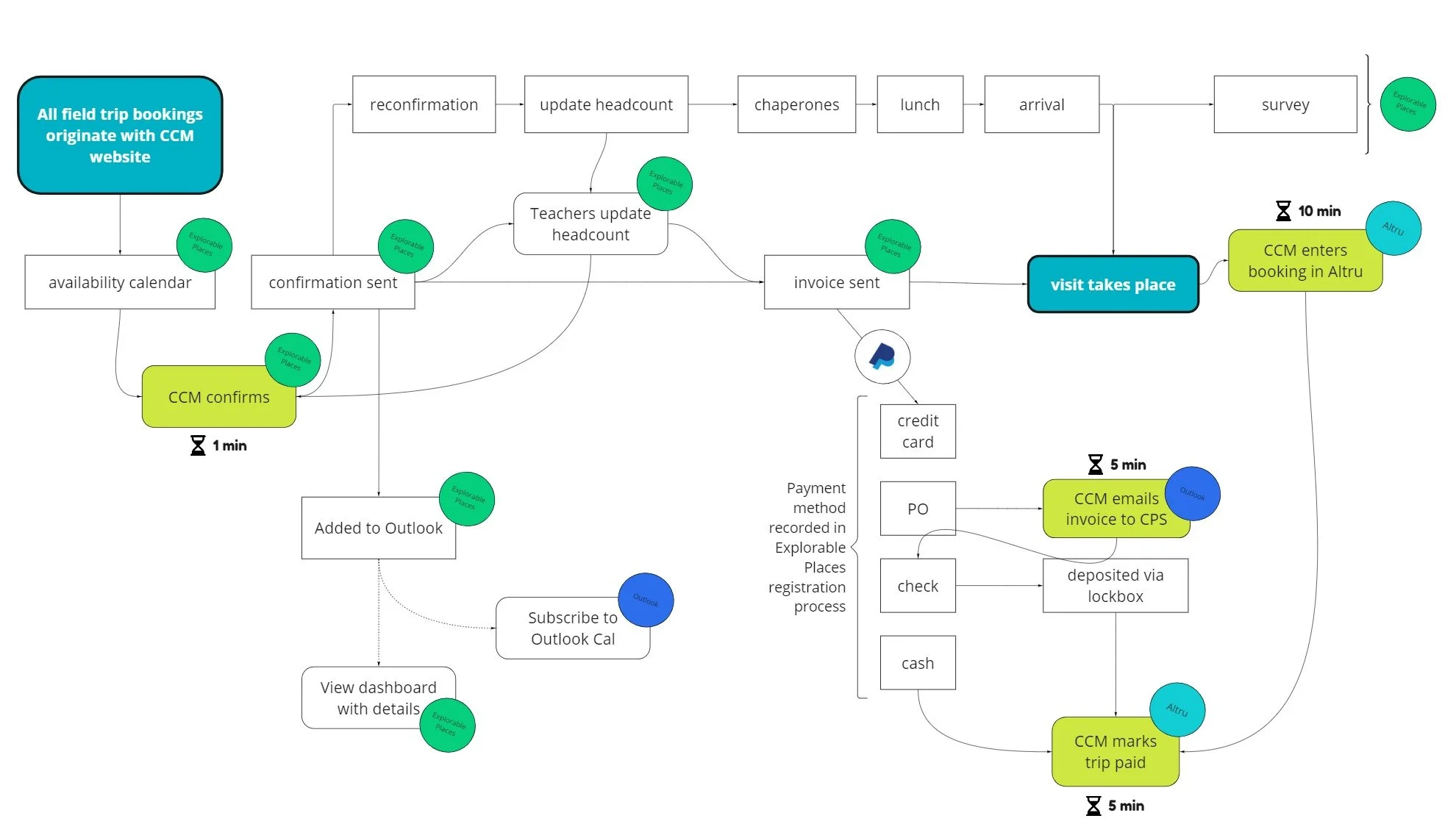Context
Like many informal learning spaces, Chicago Children’s Museum closed its doors in March 2020. Reopening to the public in 2021 presented a new opportunity to re-think the structure and process of the field trip program.
Challenge
How might we streamline end-to-end field trip operations to make it easier on everyone involved?
Results
Reduction in staff time–the time required to field an inquiry and complete a single field trip booking went from approximately 2 hours to 15 minutes, making it much easier…and 8 times faster.
Clear communications–automated emails provided critical just-in-time information to educators, eliminating the need for staff to manually track and send emails. A robust web page with FAQ and single page guides made it easy to share important museum policies.
Internal and external transparency–the team developed a tiered pricing strategy for more equitable access to museum admission, which was posted directly on the website for group leaders to reference. A service blueprint allowed everyone on the museum team to see how their contributions impacted the field trip experience for visitors.
Insights
Human-centered means all of the humans involved. Improving the customer experience doesn’t have to come at the expense of the employee. We can make it easier for the humans on both sides of the transaction.
More important than the cost savings found in reducing staff time was the message behind this effort: we value your skills and sanity, and we are working to ensure you dedicate as little time as possible to listening to voicemail and doing manual data entry.
Similarly, the redesigned field trip process reinforced what we already knew about educators: they have much more important work to do and we can put a premium on their time and attention by making this experience as hassle-free as we can.
Process
Empathize: First, we took the time to understand the concerns and priorities of educators organizing educational experiences for their students. We determined customer pain points in the process through interviews, user personas, and process mapping.
Ideate: We tapped the creativity of the team to generate a volume of possible solutions to these obstacles, then sorted these ideas by effort and impact to determine which ideas we could try right away.
Prototype: We used low-fidelity versions (aka “sloppy copies”) of signage to avoid becoming too attached to our solutions. This way, we could easily–and cheaply–make changes along the way.
Test: We evaluated the impact of our various solutions. We observed students entering and responding to our wayfinding prompts. We fielded questions from educators. We listened to staff during team debriefs to find out what worked and what didn’t.

